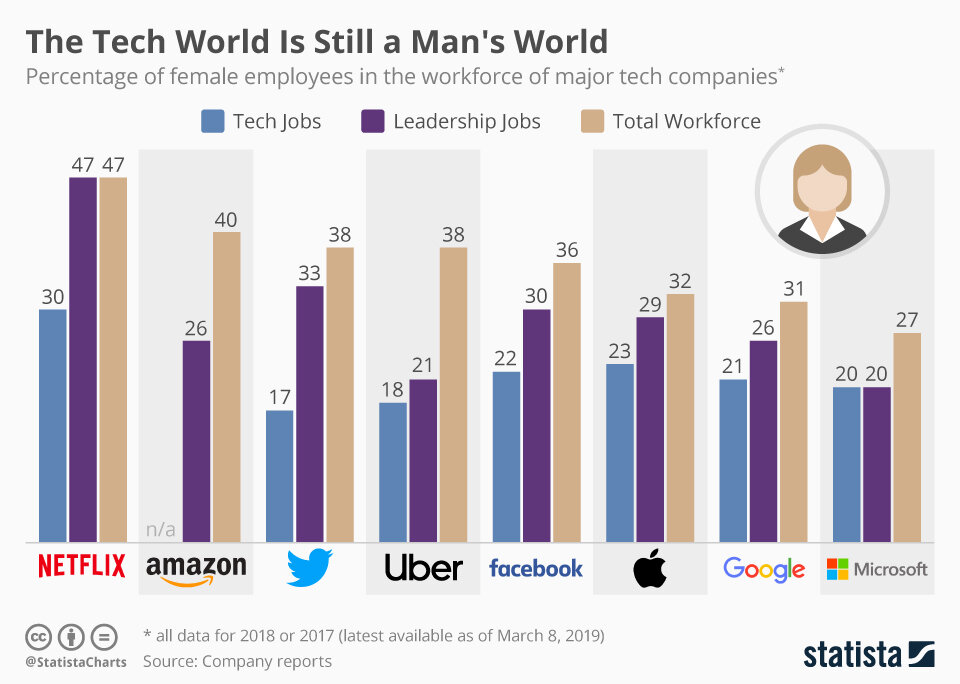This month we jump into the history of the cable industry in the US with Cable Cowboy. The book follows cable’s main character for over 30 years, John Malone, the intense, deal-addicted CEO of Telecommunications International (TCI).
Tech Themes
Repurposed Infrastructure. Repurposed infrastructure is one of the incredible drivers of technological change covered in Carlota Perez’s Technology Revolutions and Financial Capital. When a new technology wave comes along, it builds on the backs of existing infrastructure to reach a massive scale. Railroads laid the foundation for oil transport pipelines. Later, telecommunications companies used the miles and miles of cleared railroad land to hang wires to provide phone service through the US. Cable systems were initially used to pull down broadcast signals and bring them to remote places. Over time, more and more content providers like CNN, TBS, BET started to produce shows with cable distribution in mind. Cable became a bigger and bigger presence, so when the internet began to gain steam in the early 1990s, Cable was ready to play a role. It just so happened that Cable was best positioned to provide internet service to individual homes because, unlike the phone companies’ copper wiring, Cable had made extensive use of coaxial fiber which provided much faster speeds. In 1997, after an extended period of underperformance for the Cable industry, Microsoft announced a $1B investment in Comcast. The size of the deal showed the importance of cable providers in the growth of the internet.
Pipes + Content. One of the major issues surrounding TCI as they faced anti-trust scrutiny was their ownership of multiple TV channels. Malone realized that the content companies could make significant profits, especially when content was shown across multiple cable systems. TCI enjoyed the same Scale Economies Power as Netflix. Once the cable channel produces content, any way to spread the content cost over more subscribers is a no-brainer. However, these content deals were worrisome given TCI’s massive cable presence (>8,000,000 subscribers). TCI would frequently demand that channels take an equity investment to access TCI’s cable system. “In exchange for getting on TCI systems, TCI drove a tough bargain. He demanded that cable networks either allow TCI to invest in them directly, or they had to give TCI discounts on price, since TCI bought in bulk. In return for most-favored-nation-status on price, TCI gave any programmer immediate access to nearly one-fifth of all US subscribers in a single stroke.” TCI would impose its dominant position - we can either carry your channel and make an investment, or you can miss out on 8 million subscribers. Channels would frequently choose the former. Malone tried to avoid anti-trust by creating Liberty Media. This spinoff featured all of TCI’s investments in cable providers, offering a pseudo-separation from the telecom giant (although John Malone would completely control liberty).
Early, Not Wrong. Several times in history, companies or people were early to an idea before it was feasible. Webvan formed the concept of an online grocery store that could deliver fresh groceries to your house. It raised $800M before flaming out in the public markets. Later, Instacart came along and is now worth over $30B. There are many examples: Napster/Spotify, MySpace/Facebook, Pets.com/Chewy, Go Corporation/iPad, and Loudcloud/AWS. The early idea in the telecom industry was the information superhighway. We’ve discussed this before, but the idea is that you would use your tv to access the outside world, including ordering Pizza, accessing bank info, video calling friends, watching shows, and on-demand movies. The first instantiation of this idea was the QUBE, an expensive set-top box that gave users a plethora of additional interactive services. The QUBE was the launch project of a joint venture between American Express and Warner Communications to launch a cable system in the late 1970s. The QUBE was introduced in 1982 but cost way too much money to produce. With steep losses and mounting debt, Warner Amex Cable “abandoned the QUBE because it was financially infeasible.” In 1992, Malone delivered a now-famous speech on the future of the television industry, predicting that TVs would offer 500 channels to subscribers, with movies, communications, and shopping. 10 years after the QUBE’s failure, Time Warner tried to fulfill Malone’s promise by launching the Full-Service Network (FSN) with the same idea - offering a ton of services to users through a specialized hardware + software approach. This box was still insanely expensive (>$1,000 per box) because the company had to develop all hardware and software. After significant losses, the project was closed. It wasn’t until recently that TV’s evolved to what so many people thought they might become during those exciting internet boom years of the late 1990s. In this example and several above, sometimes the idea is correct, but the medium or user experience is wrong. It turned out that people used a computer and the internet to access shop, order food, or chat with friends, not the TV. In 2015, Domino’s announced that you could now order Pizza from your TV.
Business Themes
Complicated Transactions. Perhaps the craziest deal in John Malone’s years of experience in complex deal-making was his spinoff of Liberty Media. Liberty represented the content arm of TCI and held positions in famous channels like CNN and BET. Malone was intrigued at structuring a deal that would evade taxes and give himself the most potential upside. To create this “artificial” upside, Malone engineered a rights offering, whereby existing TCI shareholders could purchase the right to swap 16 shares of TCI for 1 share of Liberty. Malone set the price to swap at a ridiculously high value of TCI shares - ~valuing Liberty at $300 per share. “It seemed like such a lopsided offer: 16 shares of TCI for just 1 share of Liberty? That valued Liberty at $3000 a share, for a total market value of more than $600M by Malone’s reckoning. How could that be, analysts asked, given that Liberty posed a loss on revenue fo a mere $52M for the pro-forma nine months? No one on Wall Street expected the stock to trade up to $300 anytime soon.” The complexity of the rights offering + spinoff made the transaction opaque enough that even seasoned investors were confused about how it all worked and declined to buy the rights. This deal meant Malone would have more control of the newly separate Liberty Media. At the same time, the stock spin had such low participation that shares were initially thinly traded. Once people realized the quality of the company’s assets, the stock price shot up, along with Malone’s net worth. Even crazier, Malone took a loan from the new Liberty Media to buy shares of the company, meaning he had just created a massive amount of value by putting up hardly any capital. For a man that loved complex deals, this deal is one of his most complex and most lucrative.
Deal Maker Extraordinaire / Levered Rollups. John Malone and TCI loved deals and hated taxes. When TCI was building out cable networks, they acquired a new cable system almost every two weeks. Malone popularized using EBITDA (earnings before interest, taxes, depreciation, and amortization) as a proxy for real cash flow relative to net income, which incorporates tax and interest payments. To Malone, debt could be used for acquisitions to limit paying taxes and build scale. Once banks got comfortable with EBITDA, Malone went on an acquisition tear. “From 1984 to 1987, Malone had spent nearly $3B for more than 150 cable companies, placing TCI wires into one out of nearly every five with cable in the country, a penetration that was twice that of its next largest rival.” Throughout his career, he rallied many different cable leaders to find a deal that worked for everyone. In 1986, when fellow industry titan Ted Turner ran into financial trouble, Malone reached out to Viacom leader Sumner Redstone, to avoid letting Time Inc (owner of HBO) buy Turner’s CNN. After a quick negotiation, 31 cable operators agreed to rescue Turner Broadcasting with a $550M investment, allowing Turner to maintain control and avoid a takeover. Later, Malone led an industry consortium that included TCI, Comcast, and Cox to create a high speed internet service called, At Home, in 1996. “At Home was responsible for designing the high-speed network and providing services such as e-mail, and a home page featuring news, entertainment, sports, and chat groups. Cable operators were required to upgrade their local systems to accommodate two-way transmission, as well as handle marketing, billing, and customer complaints, for which they would get 65% of the revenue.” At Home ended up buying early internet search company Excite in a famous $7.5B deal, that diluted cable owners and eventually led to bankruptcy for the combined companies. Malone’s instinct was always to try his best to work with a counterparty because he genuinely believed a deal between two competitors provided better outcomes to everyone.
Tracking Stocks. Malone popularized the use of tracking stocks, which are publicly traded companies that mirror the operating performance of the underlying asset owned by a company. John Malone loved tracking stocks because they could be used to issue equity to finance operations and give investors access to specific divisions of a conglomerate while allowing the parent to maintain full control. While tracking stocks have been out of favor (except for Liberty Media, LOL), they were once highly regarded and even featured in the original planning of AT&T’s $48B purchase of TCI in 1998. AT&T financed its TCI acquisition with debt and new AT&T stock, diluting existing shareholders. AT&T CEO Michael Armstrong had initially agreed to use tracking stocks to separate TCI’s business from the declining but cash-flowing telephone business but changed his mind after AT&T’s stock rocketed following the TCI deal announcement. Malone was angry with Armstrong’s actions, and the book includes an explanation: “heres why you should mess with it, Mike: You’ve just issued more than 400 million new shares of AT&T to buy a business that produces no earnings. It will be a huge money-loser for years, given how much you’ll spend on broadband. That’s going to sharply dilute your earnings per share, and your old shareholders like earnings. That will hurt your stock price, and then you can’t use stock to make more acquisitions, then you’re stuck. If you create a tracking stock to the performance of cable, you separate out the losses we produce and show better earnings for your main shareholders; and you can use the tracker to buy more cable interests in tax-free deals.” Tracking stocks all but faded from existence following the internet bubble and early 2000s due to their difficulty of implementation and complexity, which can confuse shareholders and cause the businesses to trade at a large discount. This all begs the question, though - which companies could use tracking stock today? Imagine an AWS tracker, a Youtube tracker, an Instagram tracker, or an Xbox tracker - all of these could allow cloud companies to attract new shareholders, do more specific tax-free mergers, and raise additional capital specific to a business unit.



